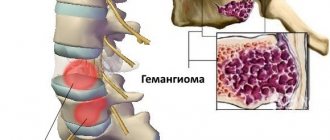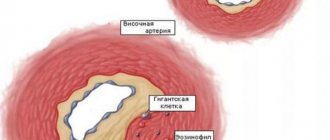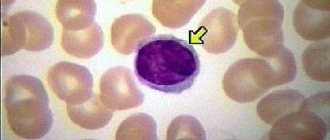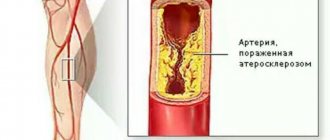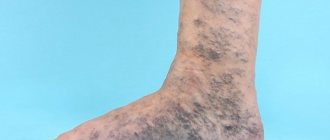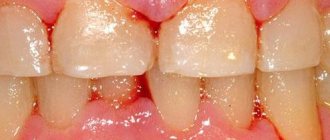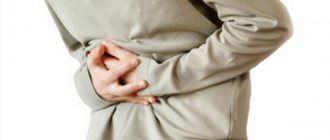Every person after physical activity feels a feeling of tightness in the chest, the frequency and depth of breathing increases. This condition in medical terminology is called shortness of breath (dyspnea). Its occurrence after any physical activity is considered a physiological norm. However, if the feeling appears at rest, it is necessary to find out the reason.
Shortness of breath is an alarming symptom in which the rhythm and frequency of breathing is disrupted, a feeling of tightness in the chest appears, and breaths become deeper and heavier. A symptom may indicate a number of diseases (for example, pathologies of the heart and blood vessels, pneumonia, asthma, tuberculosis).
Treatment methods
Treatment of shortness of breath depends on the cause that caused this alarming symptom. Treatment tactics are determined only after receiving the results of a comprehensive examination.
Medications
Symptomatic treatment of dyspnea gives only a temporary effect and alleviates the condition. Therefore, the main goal of conservative therapy is to eliminate the root cause.
If the cause of shortness of breath is cardiac pathology, patients are prescribed:
- beta blockers (Atenolol, Metoprolol);
- vasodilators (Nitroglycerin);
- ACE inhibitors (Captopril, Enalapril);
- diuretics (Furosemide, Spironolactone);
- anticoagulants (Warfarin);
- statins (Atorvastatin).
For respiratory pathologies the following is prescribed:
- antibiotics;
- mucus thinners;
- bronchodilators;
- xanthines;
- breathing exercises.
For nervous disorders, the doctor prescribes sedatives and antidepressants. If the cause of dyspnea is anemia, patients need to adjust their diet along with medications. Acute respiratory failure requires treatment in the intensive care unit.
Traditional methods
If dyspnea is short-term, traditional medicine will help relieve this symptom:
- Ledum decoction. 1 tbsp. l. dry plant, pour 200 ml of water and place on the stove. Let the broth boil for 10 minutes. Cool and strain. Take the decoction 3 times a day, each time brewing a new medicine.
- Infusion of birch leaves. 2 tbsp. l. raw materials pour 1 glass of hot water. Let it brew for half an hour. Strain. Take 0.5 cups of medicine 4-5 times a day.
- Elixir of garlic and lemon. For preparation you need 300 g of garlic and 3-4 lemons. Pass the garlic through a meat grinder and squeeze the juice from the lemons. Mix all ingredients, transfer to a jar and cover with gauze. Leave in a dark place for a day. Take 1 tsp. medications with water. Course – 14 days.
Traditional medicine should be used only in cases where dyspnea occurs rarely and is not severe. In other situations, the condition requires qualified medical care.
Other methods
You can ease an attack of dyspnea by performing some simple procedures:
- Breathing with pursed lips. This exercise reduces respiratory rate and is recommended for patients whose symptoms of shortness of breath are associated with nervous disorders. To perform the exercise, sit in a comfortable position and relax. The lips press together, leaving a small gap between them. Next, inhale noisily and exhale in 4 counts, while the lips remain compressed. The exercise must be carried out for 10 minutes.
- Use of a fan. Turn on the fan and direct the air stream to your face. This way the body will receive additional air and be able to relax.
- Steam treatments. Pour hot water into a container and add a few drops of peppermint or eucalyptus oil. Place your face above the steam and cover with a towel. Take deep breaths, inhaling the oil vapors. The procedure is performed for 5-7 minutes.
It is important to carry out these measures in simple situations, when rare and mild attacks of shortness of breath are observed.
Possible complications
Shortness of breath that occurs for physiological reasons has no consequences; it is eliminated after eliminating the provoking factor (stress, physical activity).
If dyspnea is a symptom of any pathology, it cannot be ignored. A timely visit to a doctor will help avoid further development of serious disorders within the body (cardiovascular pathologies, endocrine diseases, neurological disorders).
The neglect of the condition will gradually worsen your overall health, and attacks of dyspnea will begin to become more frequent and more severe. It is very dangerous when shortness of breath occurs at rest or during sleep. The causes in such situations can be the most dangerous and require urgent medical attention.
Diagnostics
Since there are a large number of diseases that cause shortness of breath, and their manifestations are often similar, the doctor may need additional tests to determine the disease. Depending on his assumptions, he may prescribe the following diagnostic measures:
| Study | Norm | Changes in pathologies |
Laboratory | ||
| Complete blood count (abbreviated as CBC) | Red blood cells (RBC)
Hemoglobin (Hb)
Leukocytes (WBC) 4-9*109/l. Eosinophils (EO) – up to 5% of all leukocytes or no more than 0.3*109/l. ESR – less than 15 mm/hour. | Anemia
Pneumonia
Bronchial asthma
RS infection
|
| Biochemical blood test | C-reactive protein (CRP) – no more than 5 mg/l. | Pneumonia, RS infection
|
| Sputum examination |
| Pneumonia
Bronchial asthma
|
Instrumental | ||
| ECG | Correct sinus rhythm with heart rate 60-90 beats/min. | Heart failure
|
| X-ray/fluorography of the lungs | No changes. | This test can reliably confirm the presence of pneumonia and suggest the presence of lung cancer. |
| Spirometry with bronchodilator test |
| COPD
Bronchial asthma
|
| CT scan | No pathological changes. | This study is the “gold standard” for diagnosing lung cancer. |
Depending on the research results, the doctor determines the cause of respiratory disorders and prescribes special treatment. It differs significantly in various pathologies, so the disease should be accurately diagnosed before therapy.
When to see a doctor
Shortness of breath at rest is an alarming symptom that indicates the development of a complex pathological process. Therefore, such a condition requires a medical examination, especially if chest pain, general weakness, and dizziness appear along with shortness of breath.
If dyspnea rarely bothers you, but occurs at rest, you should visit a doctor as soon as possible. Shortness of breath is unexpected and increasing in nature; it is necessary to urgently call an ambulance. Perhaps it indicates a rupture of lung tissue, a heart attack, or a vascular embolism.
The initial examination is carried out by a general practitioner; he prescribes a comprehensive examination, on the basis of which further treatment and possible consultation with highly specialized specialists are determined:
- pulmonologist;
- cardiologist;
- hematologist;
- endocrinologist;
- neurologist;
- psychiatrist.

